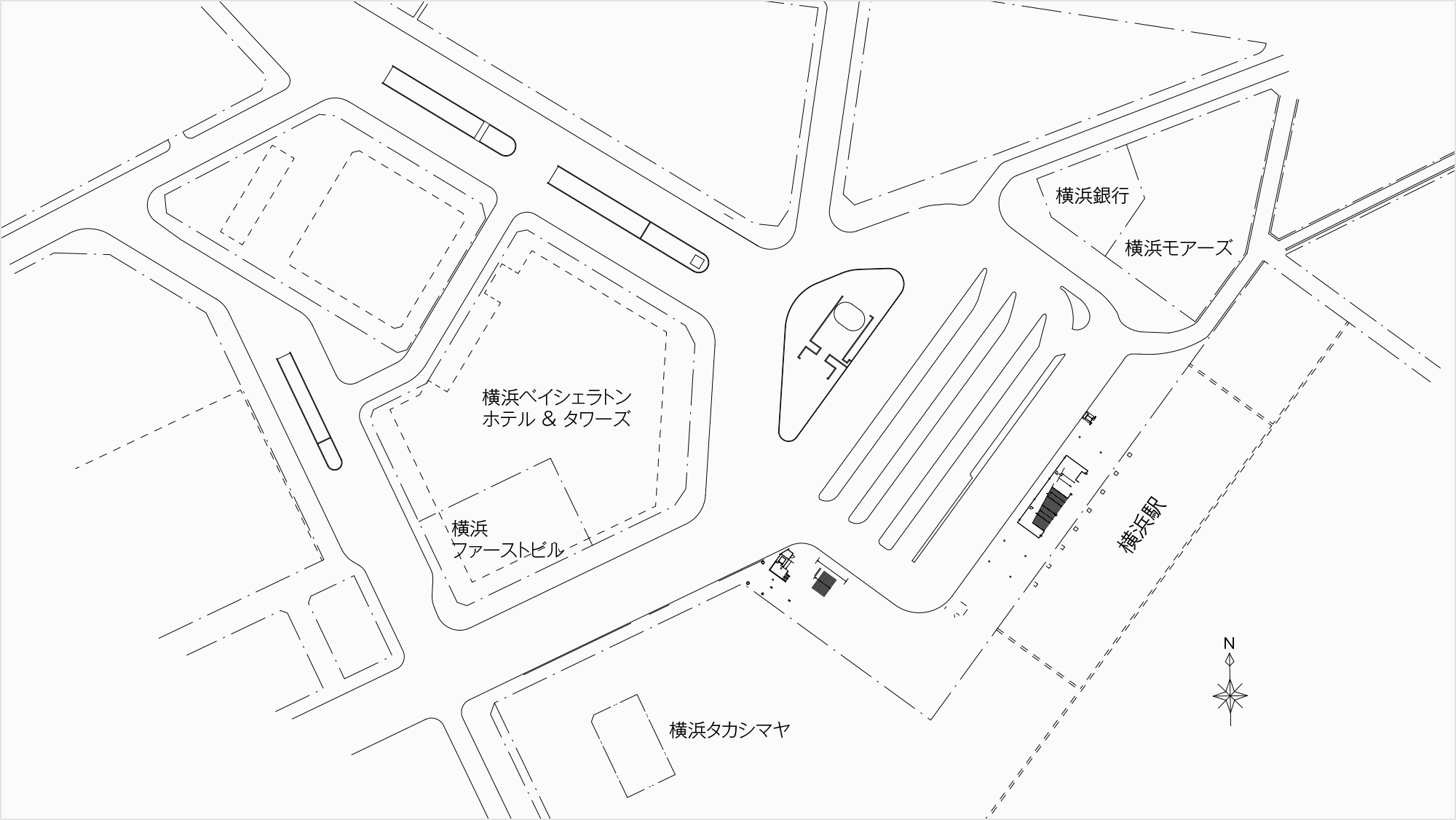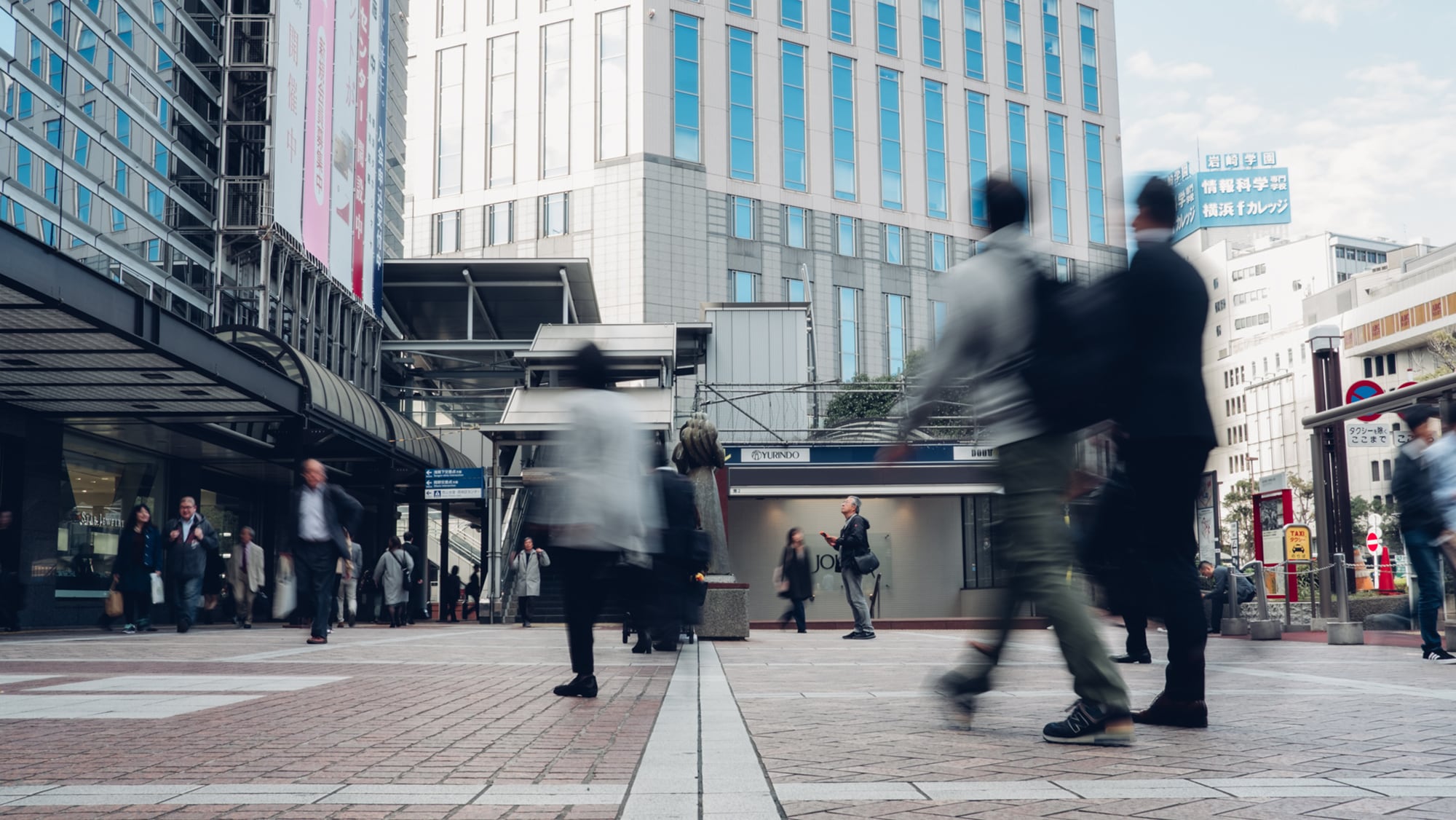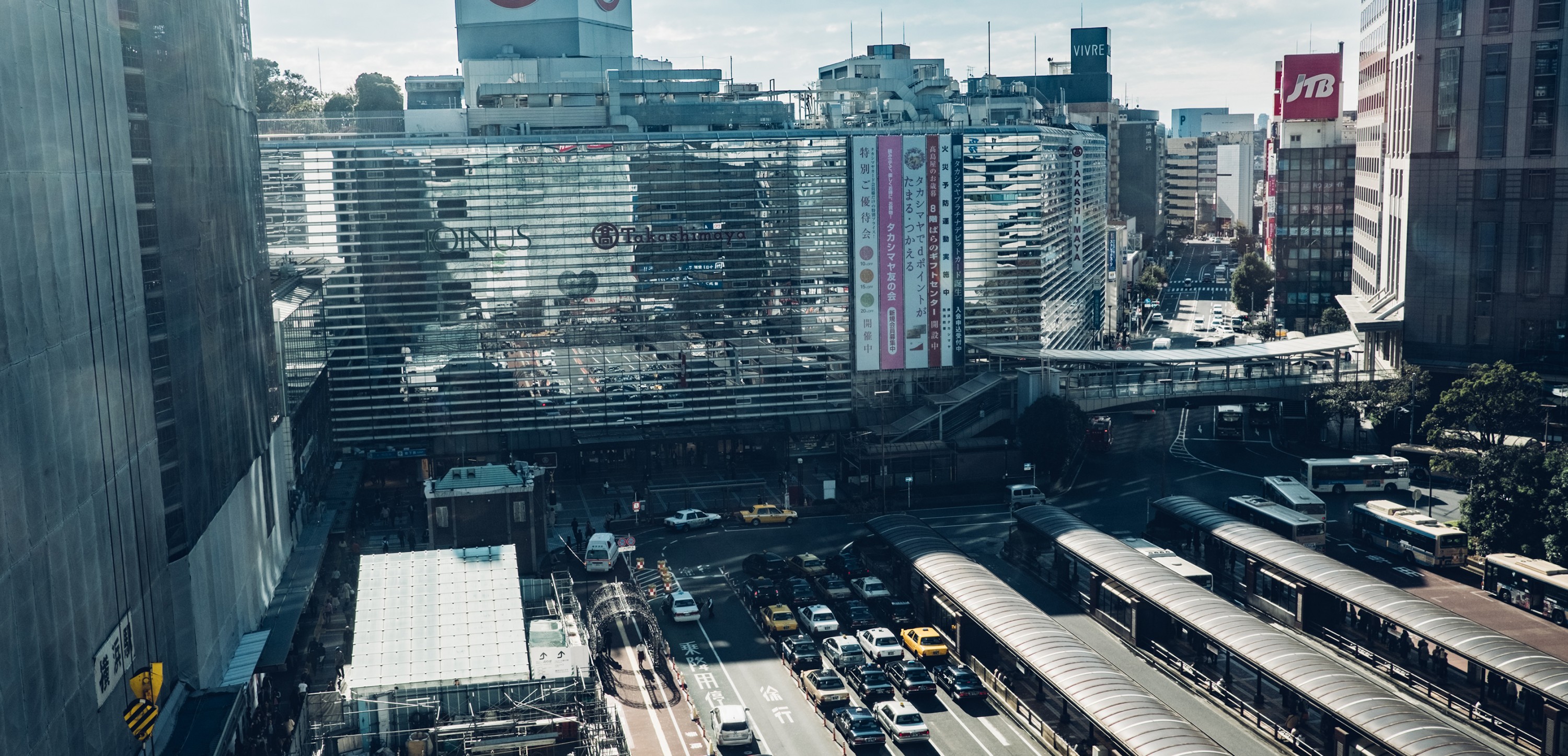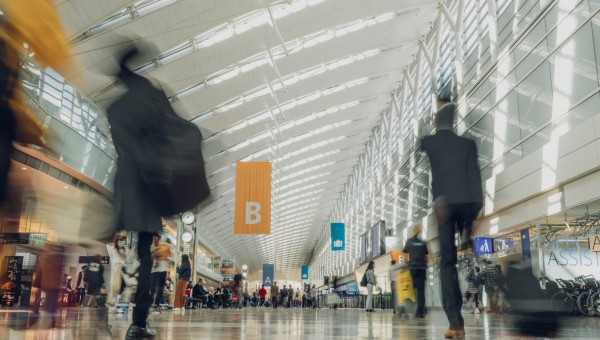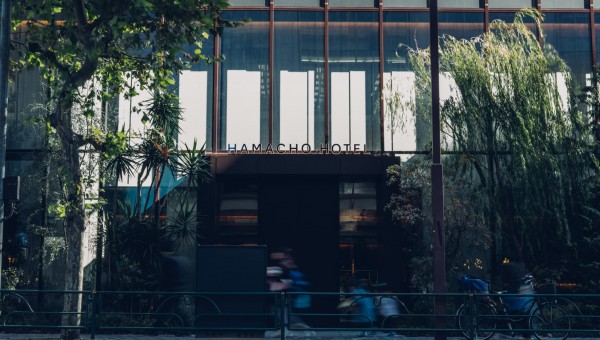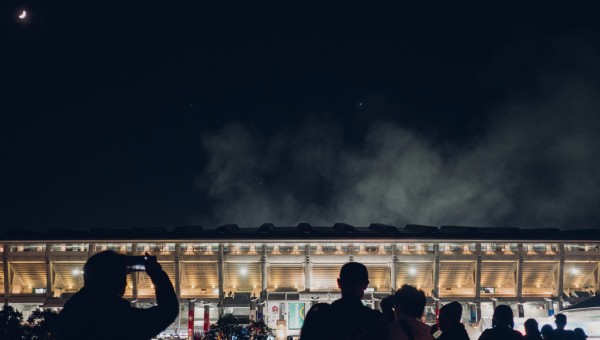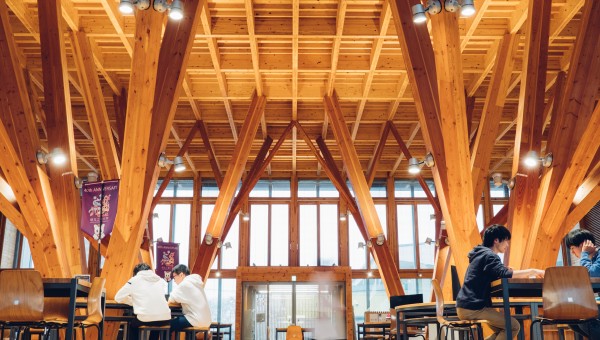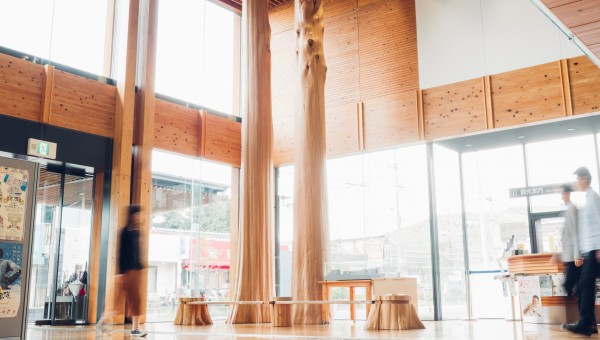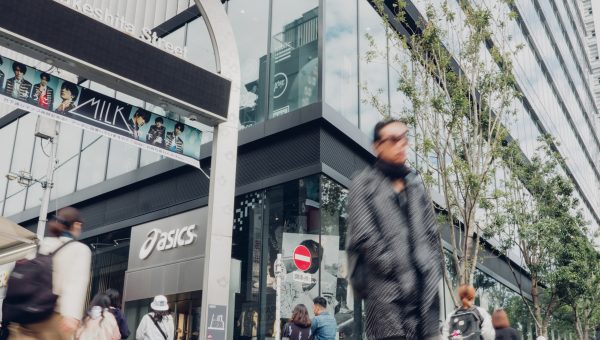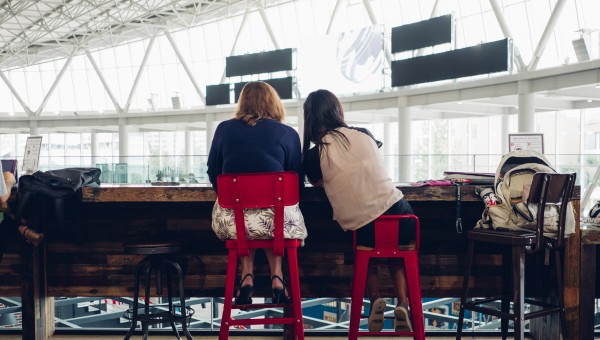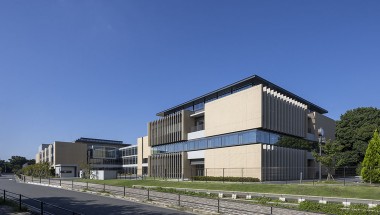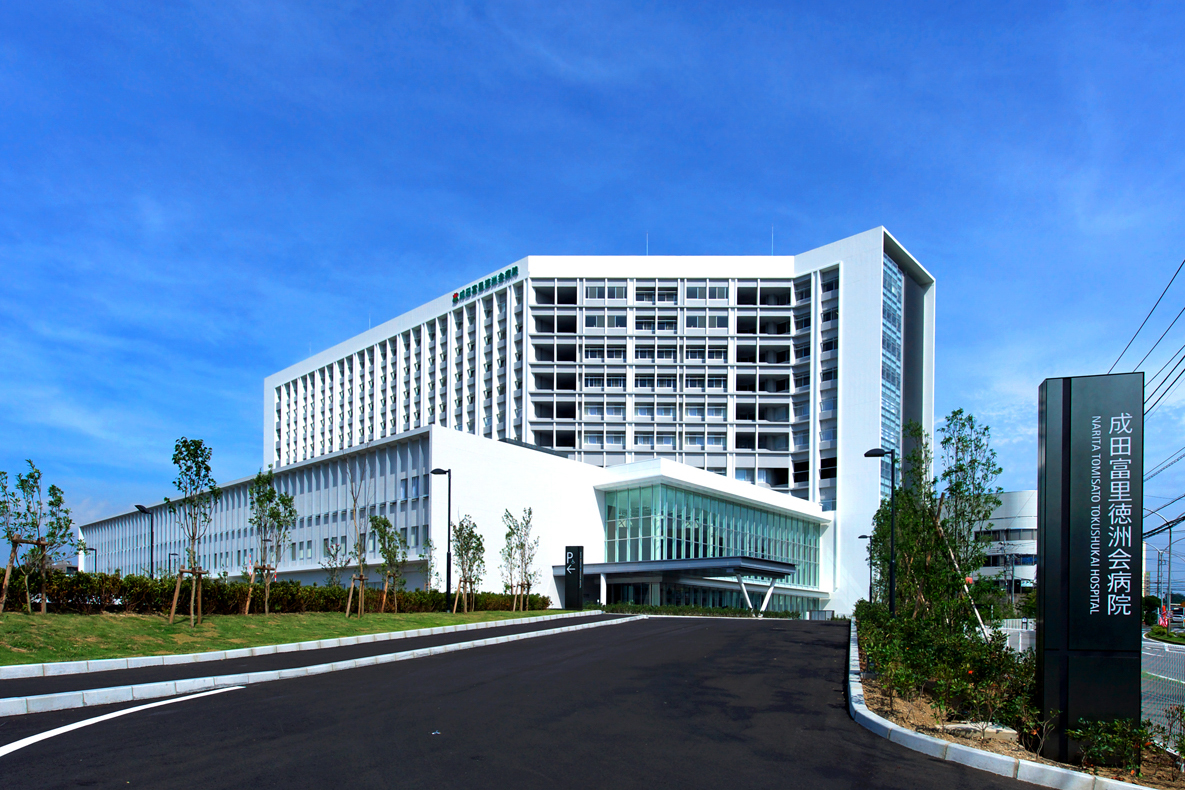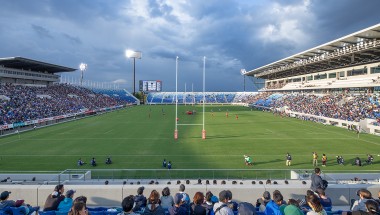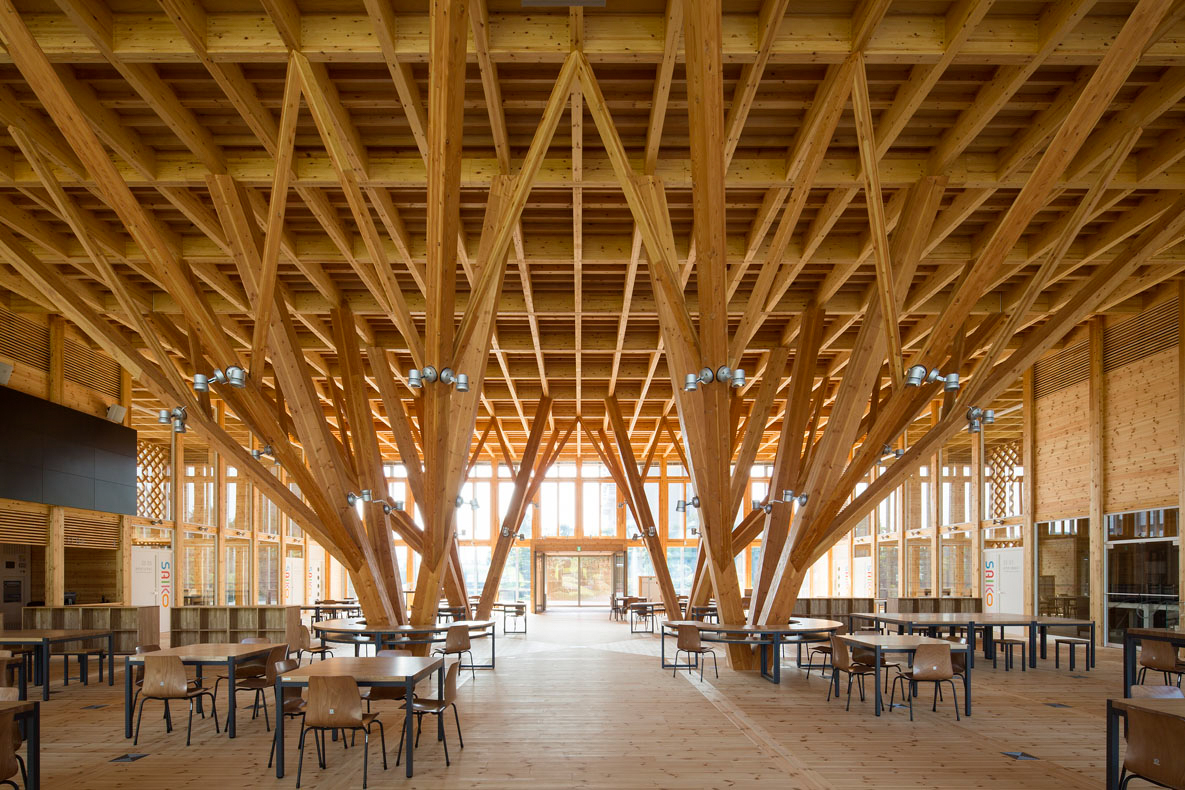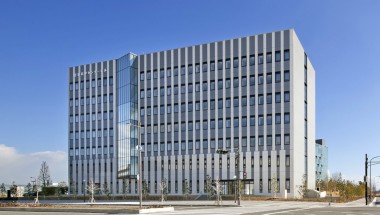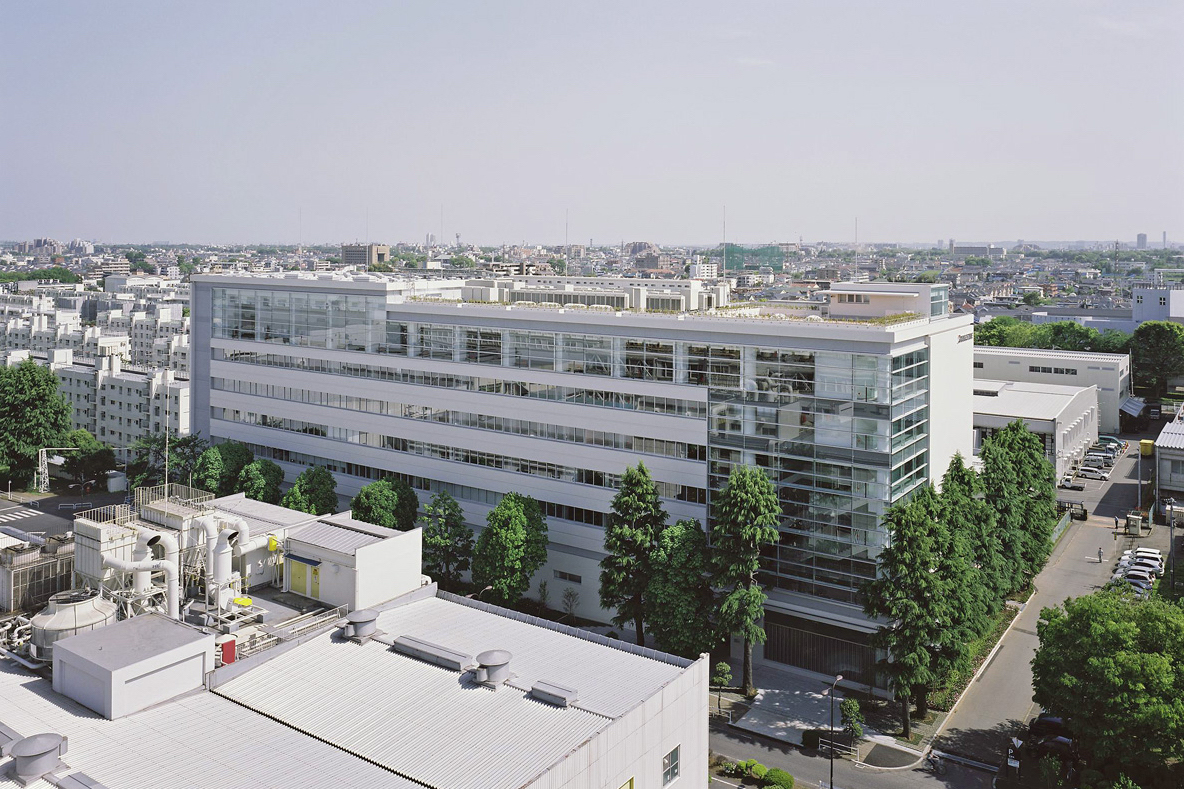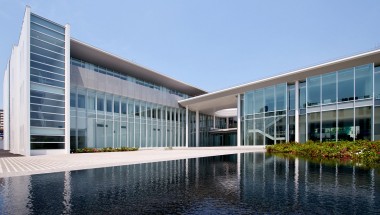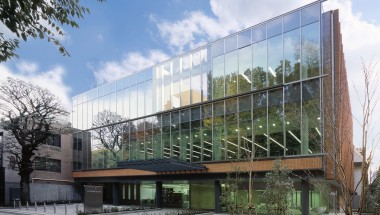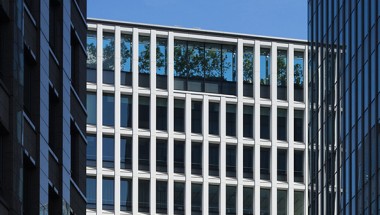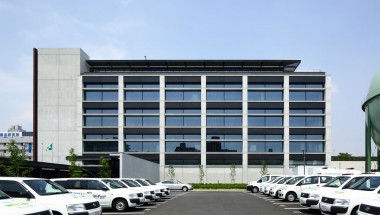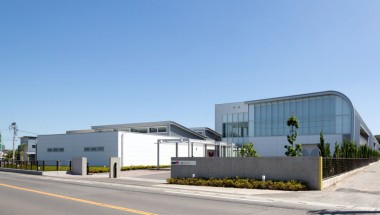The environs around the west gate of Yokohama Station had long been littered with empty lots, but in the post-war years, it began developing into a community.
For over sixty years since that time, MHS has been closely involved in the development of the area, supporting its growth.
Cities are truly living and breathing ecosystems. Spending time closely working with a city for so many years leads to new discoveries.
Yokohama’s west gate has evolved into a neighborhood in its own right.
In the post-war period, the Sagami Railway acquired various empty lots on the west gate of Yokohama Station, which drove urbanization of the area. In April of 1956, the Sagami Railway opened the Yokohama Station Meihingai, a shopping arcade along the train lines to the south of Yokohama Station’s west gate. The arcade housed 57 tenant shops. In addition, Takashimaya Store (now Yokohama Takashimaya) opened to the west of the arcade. In those days, Takashimaya was still a store, and had not evolved into the department store conglomerate it is today. These two shopping centers around the train station enlivened the city. Before long, it was transformed from a space of empty lots to a din of activity. Both were designed by MHS, a process which triggered our over half a century of involvement with the Yokohama west gate area. In 1959, the Sotetsu Kaikan complex was built, with Yokohama Takashimaya opening a department store as tenant of the building. The showfloor was a whopping 11,000 square meters. With two basement levels and eight stories above ground, it became an overnight sensation in Yokohama and a new destination for locals.

The emergence and growth of Yokohama Station’s west gate area
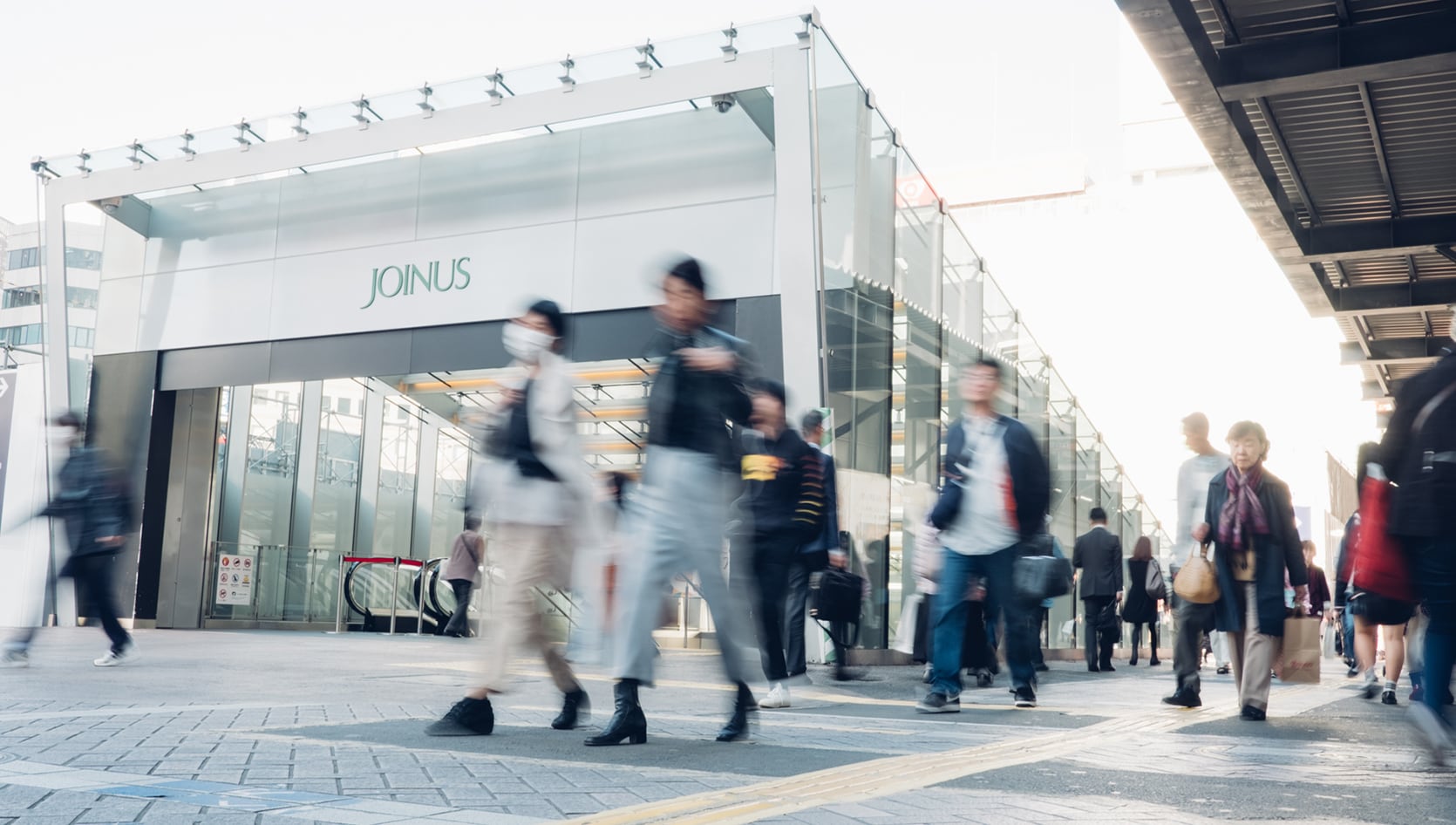
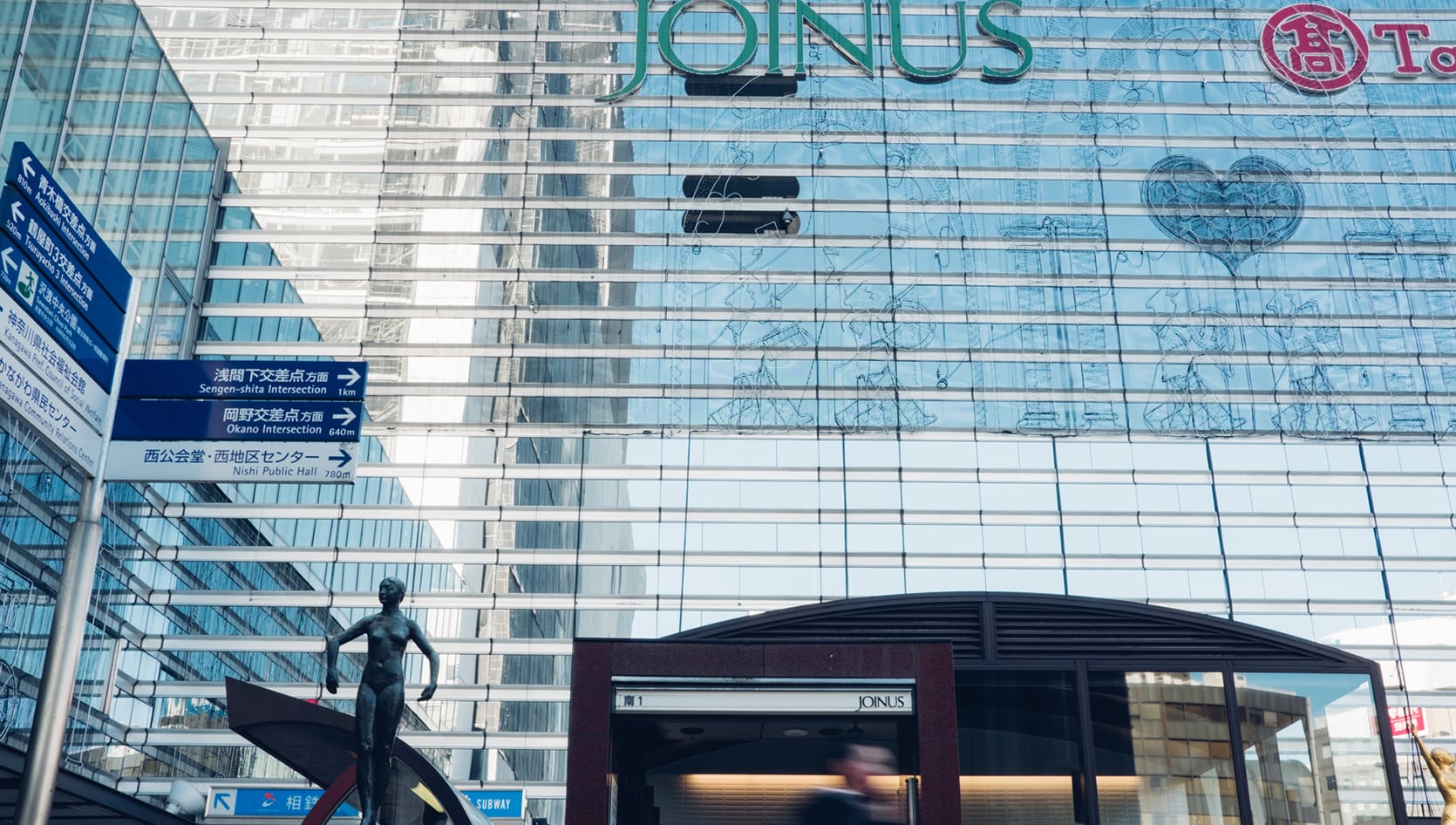
This new architectural concept would transform the train station and its basement concourse into a commercial zone.
Today, that approach has become widespread around Japan, but this was the first of its kind at the time. MHS was responsible for the design of one of these buildings. Namely, the Diamond Underground shopping center at the west gate of Yokohama Station. This concourse went up under the aegis of Yokohama Chika KK (a consortium of seven firms). Development of super-skyscrapers had already been underway in the 1960s, but underground zones were totally new. These basement concourses had been used solely as infrastructural routes and hallways conveying people from one place to another. Now, they would become destinations in their own right.
Train stations, for that matter, had served solely as transit hubs, but they would now evolve into commercial buildings. Yokohama Station was one of the frontrunners in this change. In 1962, Yokohama CIAL, operated by Yokohama Station Building, was built adjacent to the Yokohama Station Building.
The area in front of the station began being developed, with the plaza at the west gate serving as the crux of that activity. In 1965, MHS designed the Sotetsu headquarters building, which was located at the corner of that intersection. This building was planned as an office available for lease by tenants like banks and airlines, while the first basement level would be dedicated to restaurants and connect to the new Diamond Chikagai. Three years later, in 1968, MHS would also be responsible for the design of the Bank of Yokohama’s Yokohama Station Location, which went up opposite the Sotetsu headquarters building.
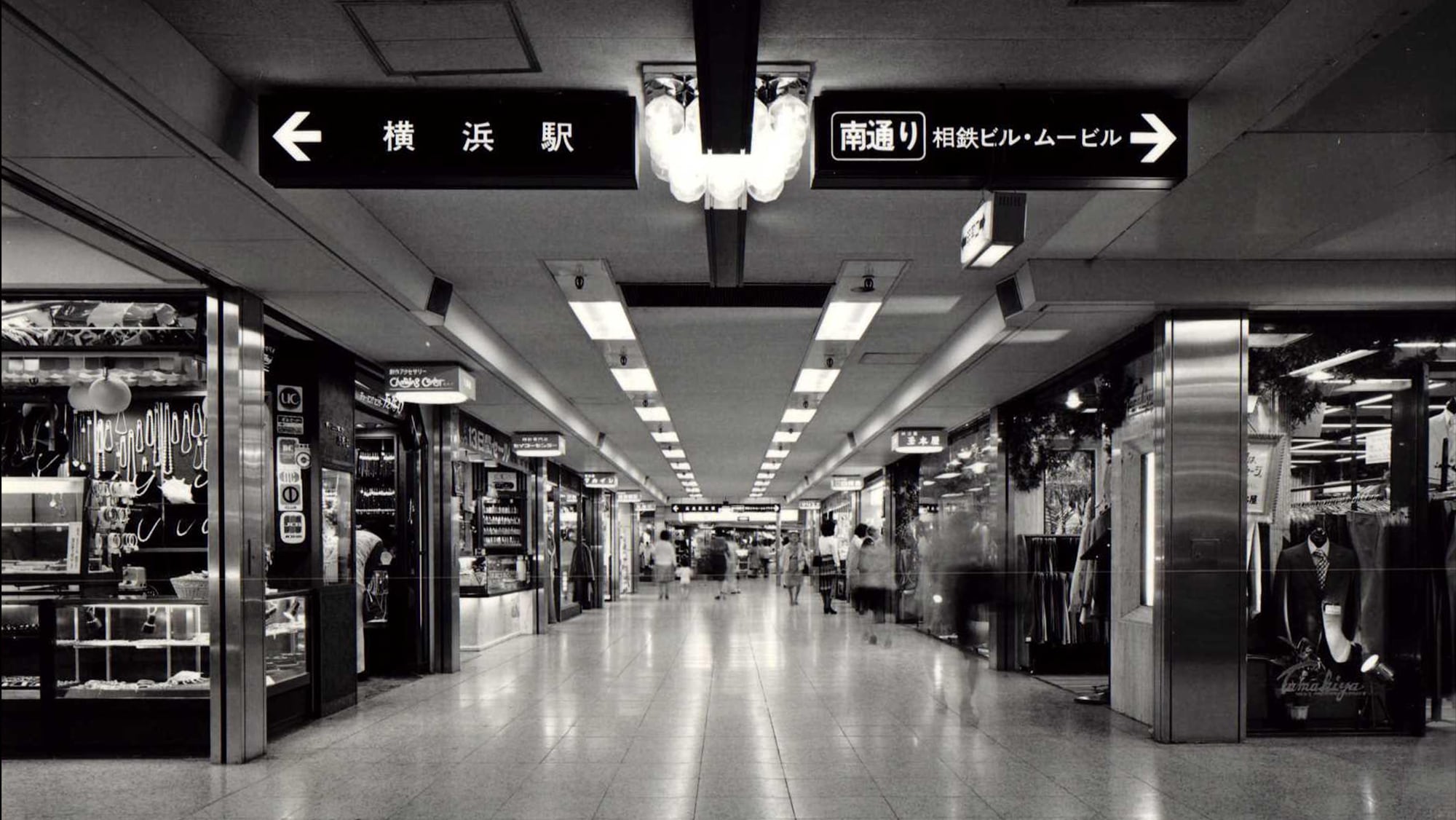
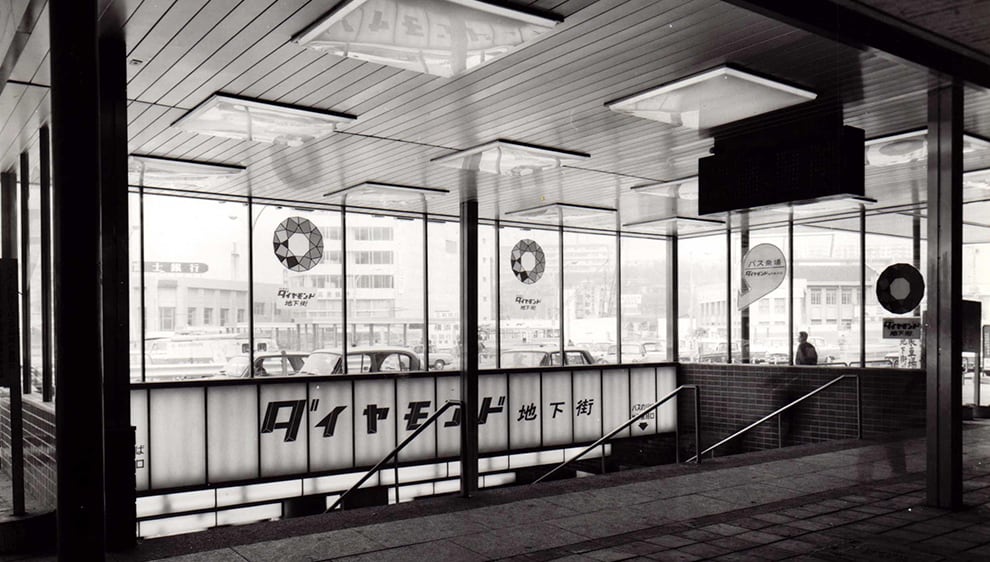
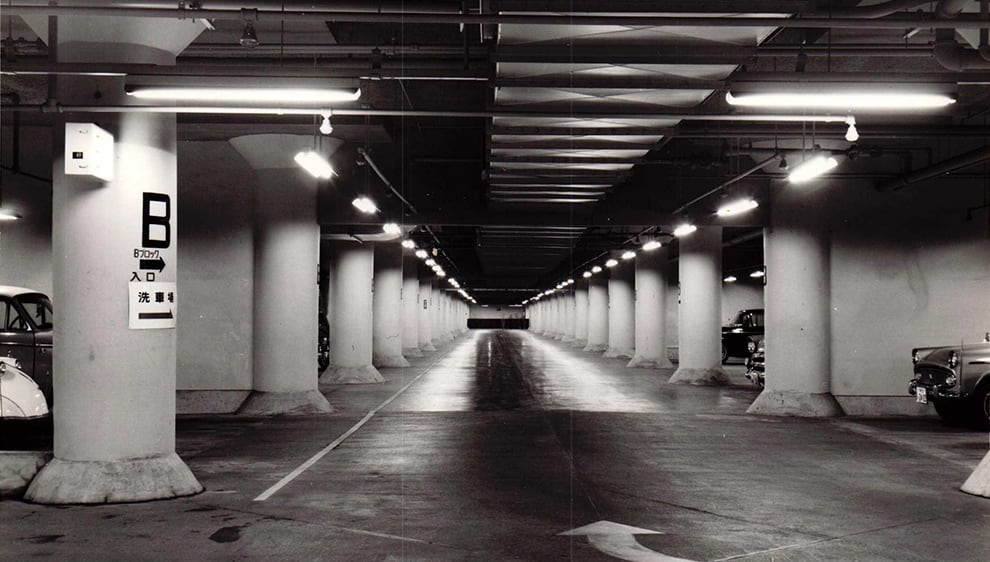
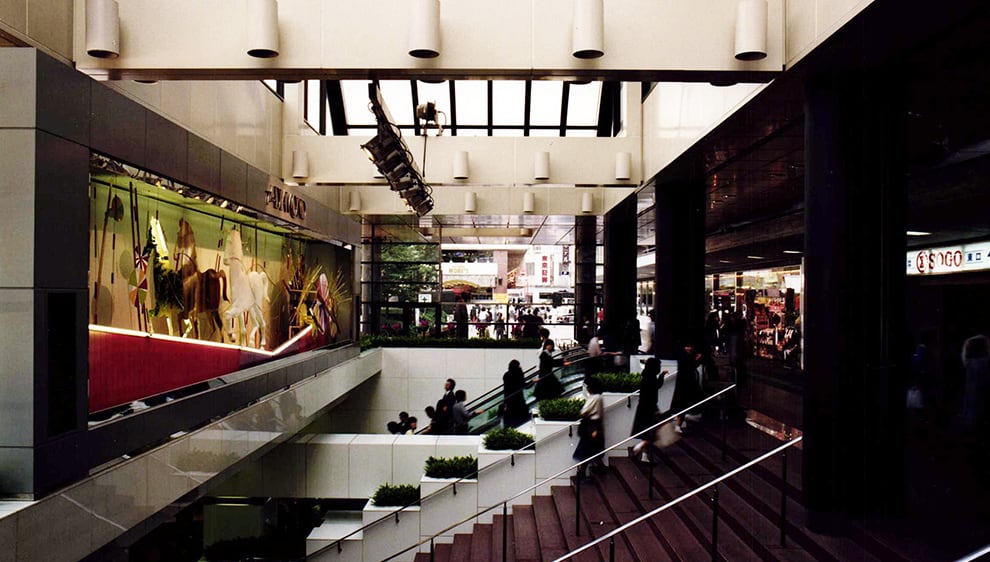
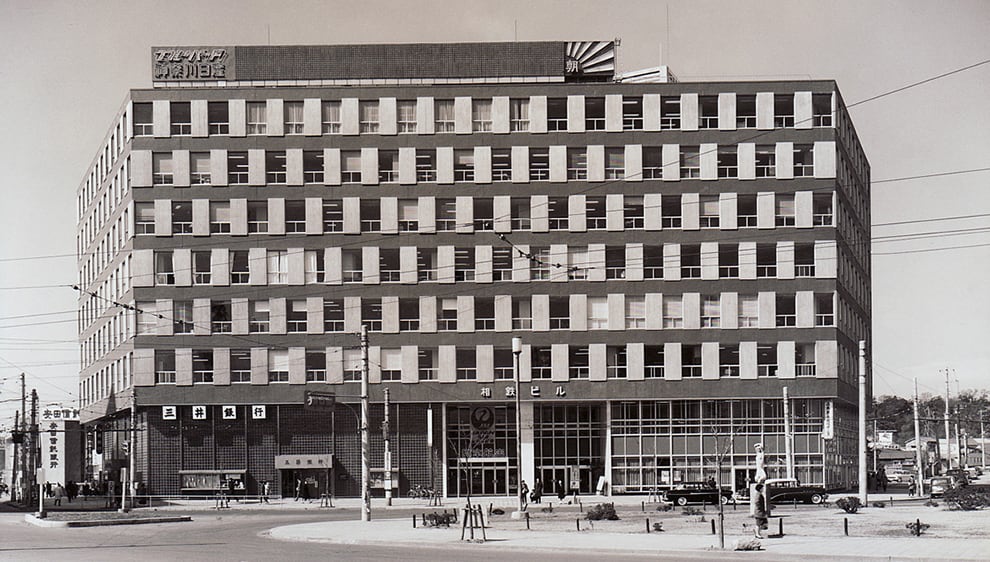
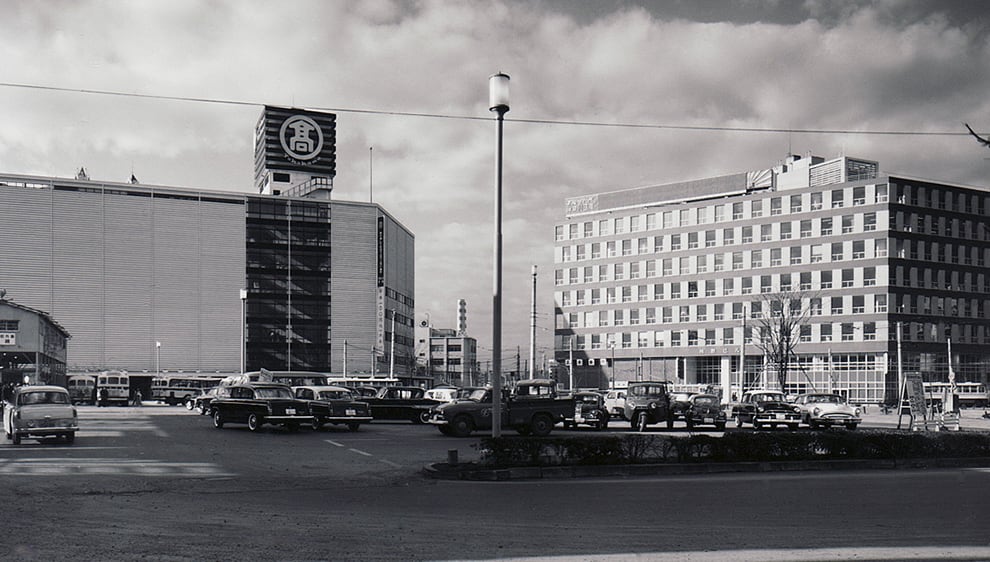
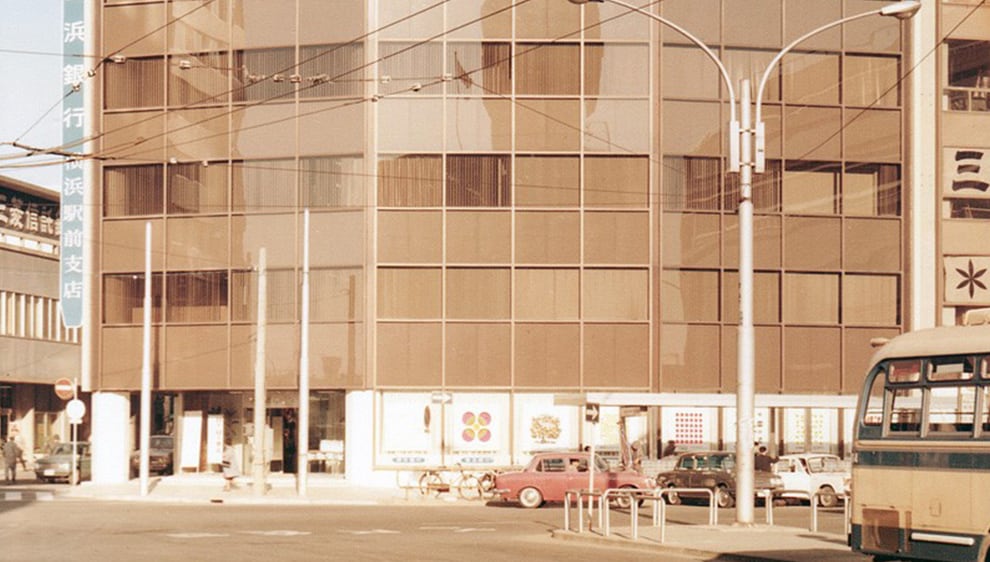
An age of train station buildings growing taller
The era: Japan’s period of rapid economic growth in the 1970s. As the train station was built up to become taller and feature more facilities, the surrounding commercial zone around Yokohama Station’s west gate, as if drawn into its orbit, also grew. In 1971, MHS designed another train station building, the Shin-Sotetsu Building, on the south side of Yokohama CIAL. The vast complex seemed to nearly engulf the Yokohama Station Meihingai. At around this time, the firm was also engaged in revamping the Yokohama Takashimaya building. In 1973, MHS was also responsible for designing the lower levels (two basement levels through fifth story) of the Sotetsu Joinus/Yokohama Takashimaya building, which was directly connected to the Sotetsu Building. Five years later, Sotetsu Joinus built up from the sixth floor to the roof, imitating a traditional style of built-up, stacking logs to create an attractive facade. The rooftop garden even featured a zoo that drew acclaim. In this way, MHS was instrumental in supporting the rapid growth of the shopping complexes around the station.
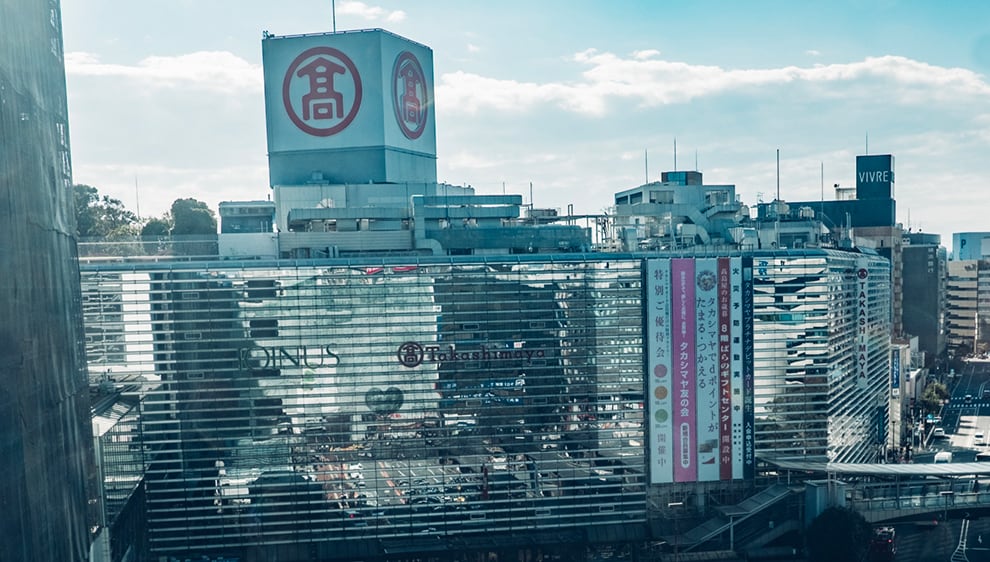
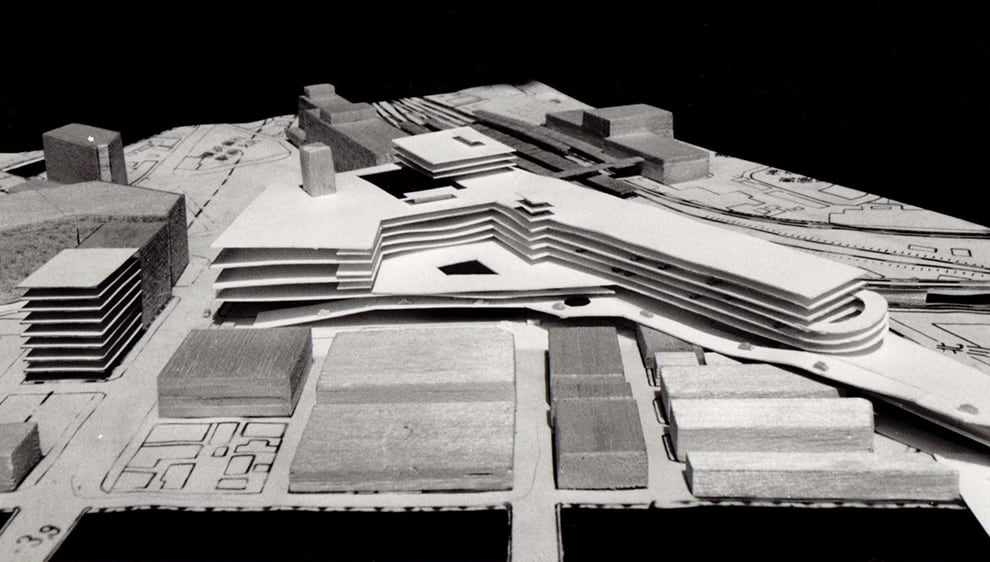
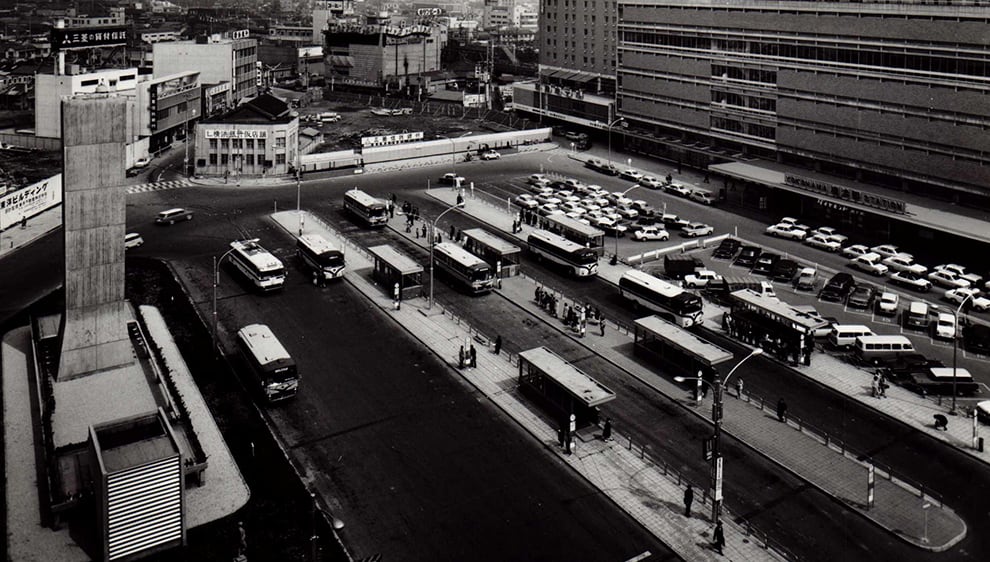
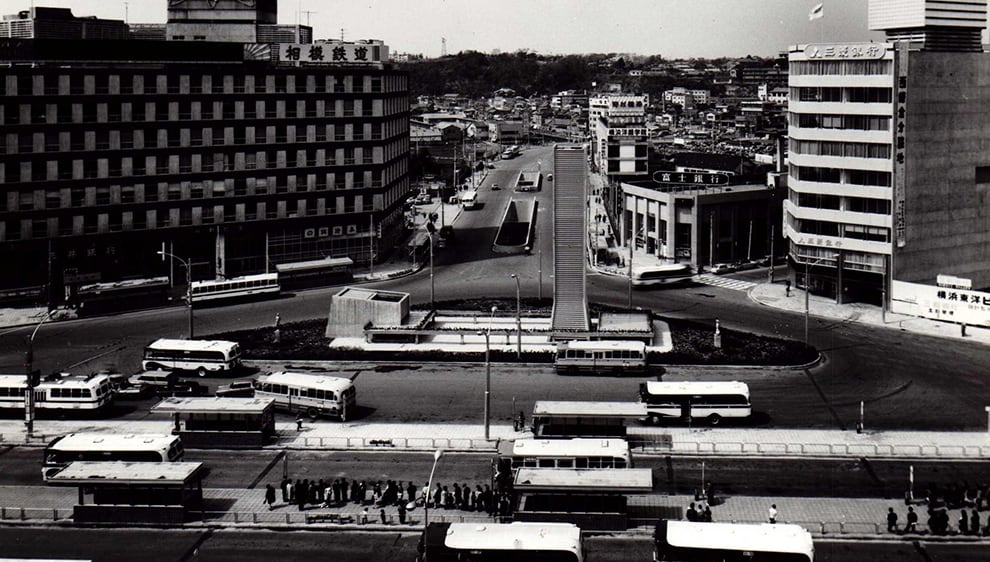
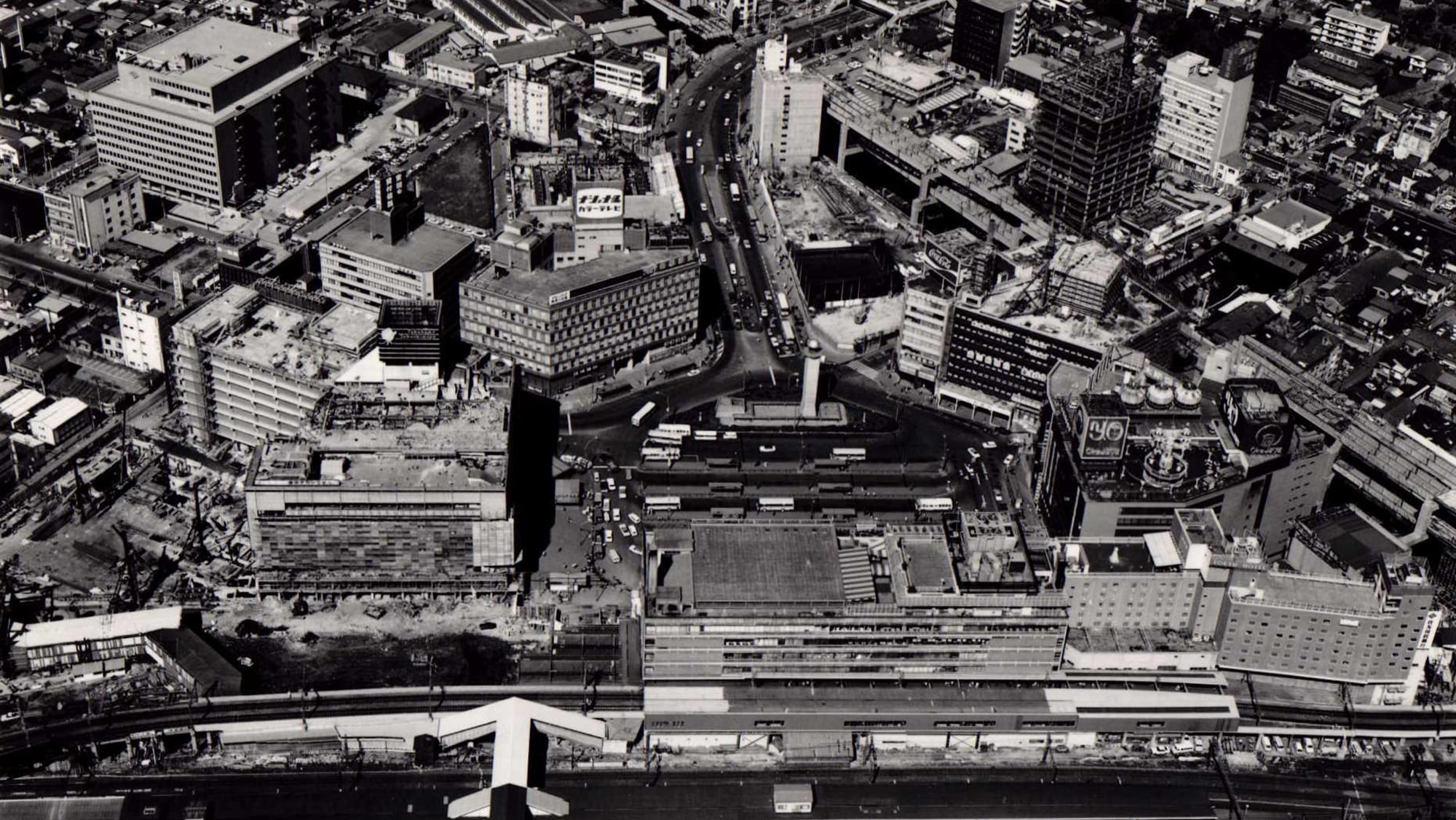
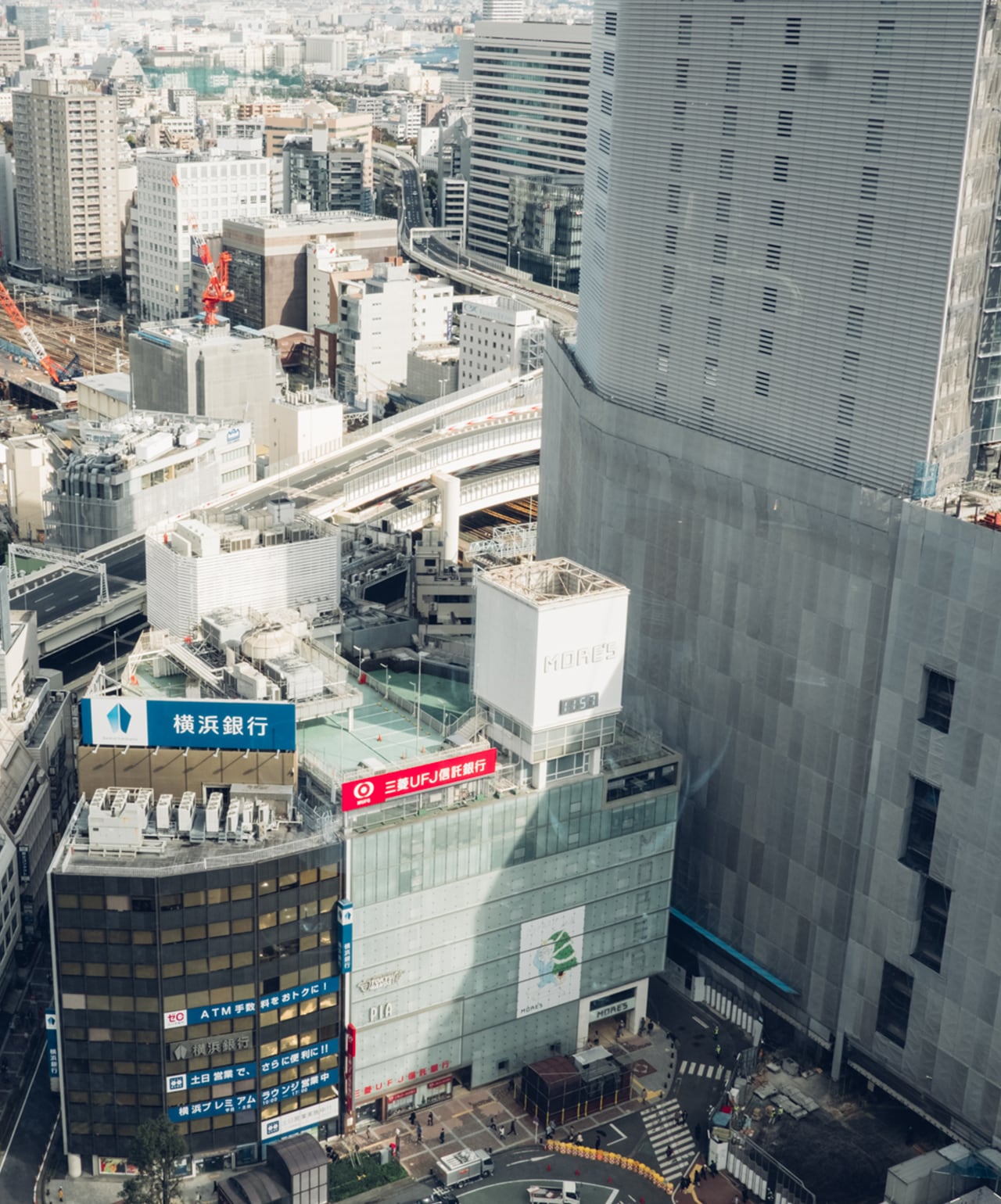
The evolution of a living, thriving city
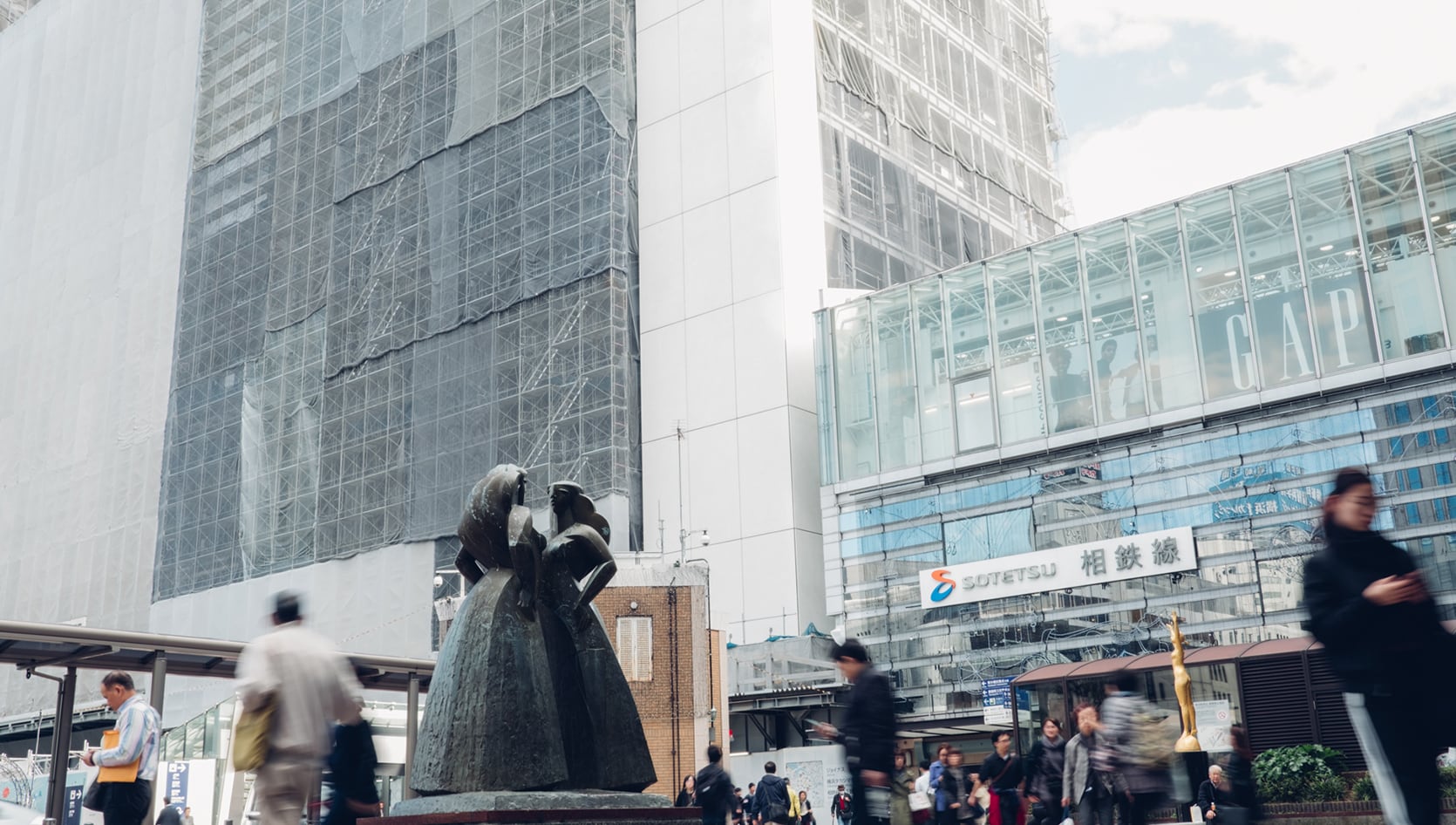
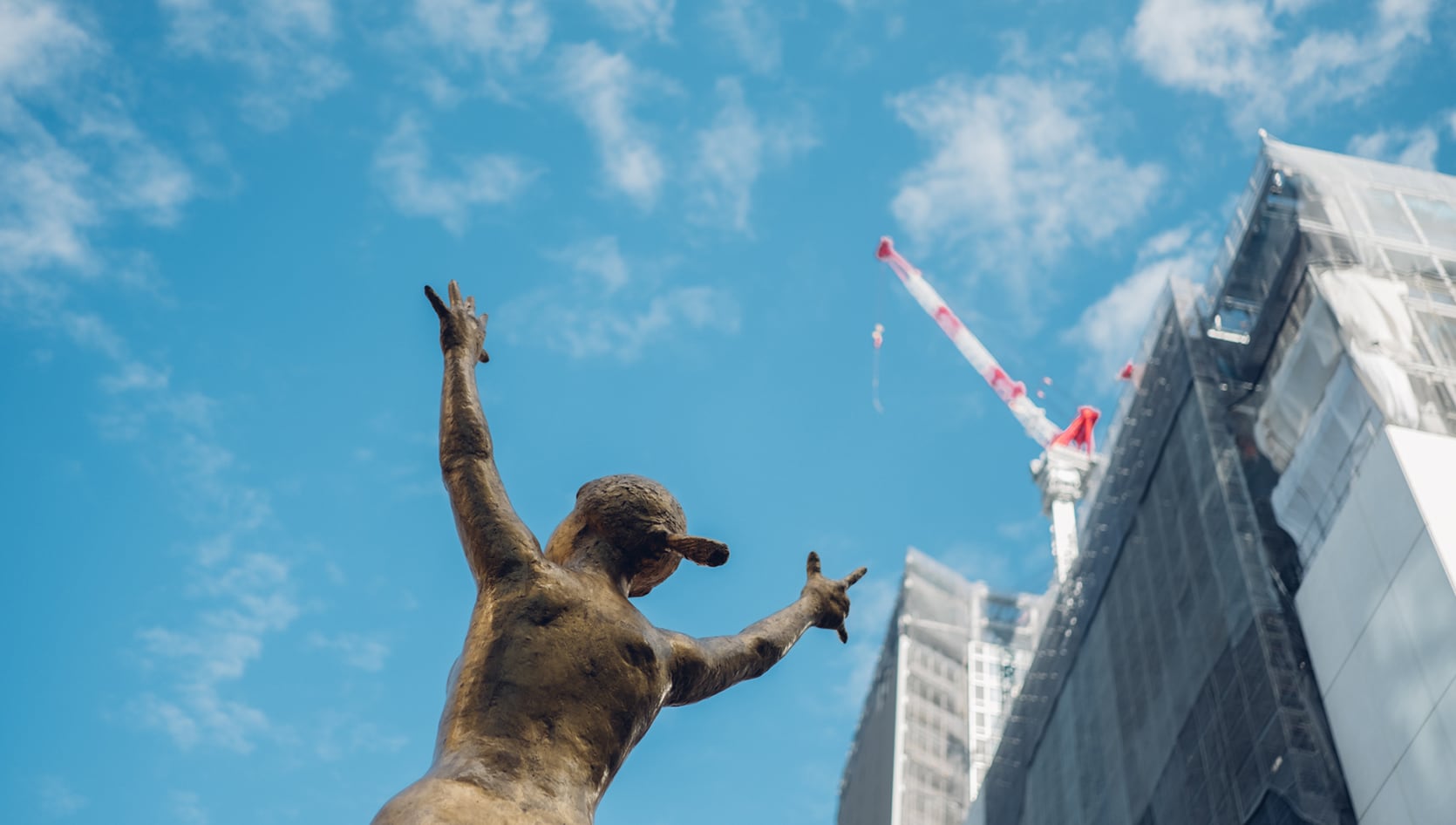
The station environs would grow to play a pivotal role in tourism and the internationalization of Japan.
In the 1990s, numerous buildings in the MM21 Project around the Minato Mirai area went up. In 1993, Yokohama Landmark Tower went up, and in 1997, Queens Square Yokohama was completed, along with the Pan-Pacific Hotel Yokohama. The shape of the city was transformed, seemingly overnight. The goal for this overarching plan was to vitalize the harbor area by bringing business, residential, commercial, and tourism concerns all into one place for the 21st century. Seeking to use the Yokohama Station environs to internationalize Japanese tourism, in 1998, MHS designed the Yokohama Bay Sheraton Hotel & Towers. The former Sotetsu headquarters building facing the west gate plaza was demolished and replaced with this new building. It, along with the adjacent Yokohama First Building, would become part of a design to create a new district. This district was subject to special zoning ordinances which allowed for making use of the land with a super-skyscraper hotel (the Bay Sheraton), a multi-use complex incorporating office space, expansion of the surrounding roadways, expansion and maintenance of Bus Terminal 2, the creation of a pedestrian deck, connection with the existing underground concourse, the creation of a public lot, and the installation of local HVAC facilities.
In spite of such robust measures being taken, one sticking point was the lack of underground parking garage space. The underground concourse, having been built in 1964, had a single parking garage floor on the second basement level, but this would not be enough to accommodate increased demand. The MHS team took part in this project as designers, and we proposed another nationwide first: expanding the parking garage to encompass a third and fourth basement level.This plan was referred to as the Yokohama Station West Gate Underground Parking Lot Expansion. Furthermore, we explored ways of maintaining the parking garage in operation even during the new construction. The stakes installed beneath floor two would be used as pillars, with temporary receiving pillars installed first in order to support the structure of the building while proceeding with construction.
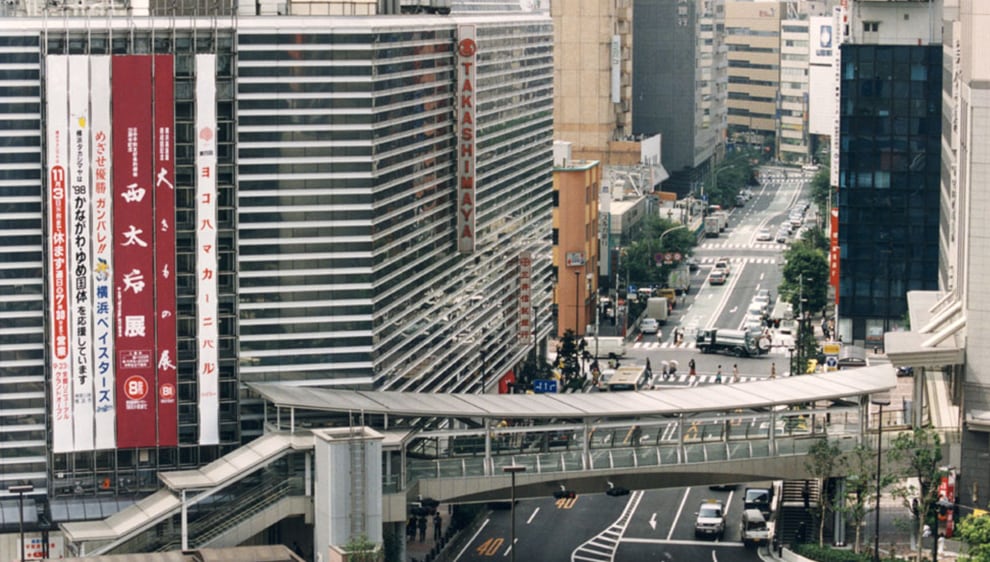
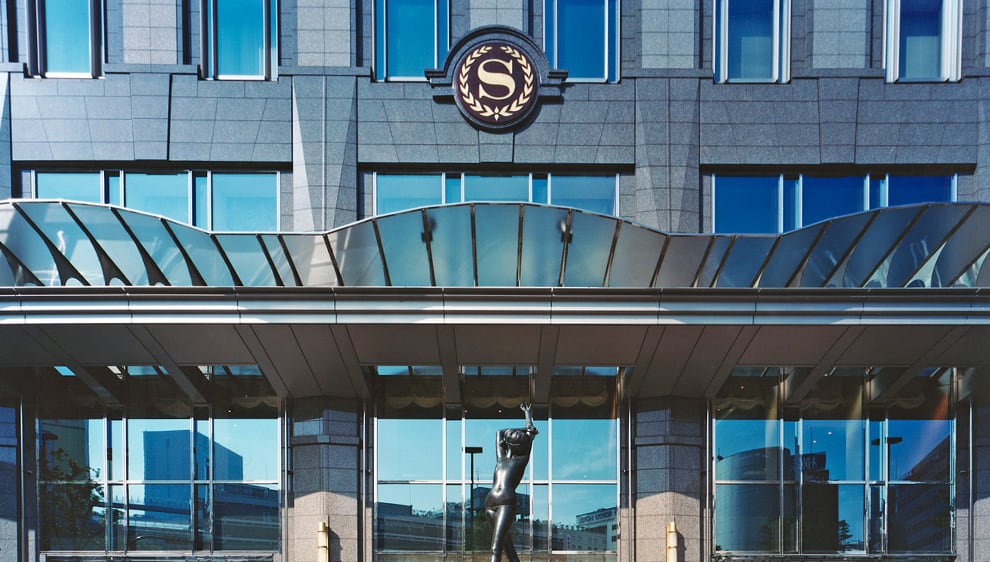
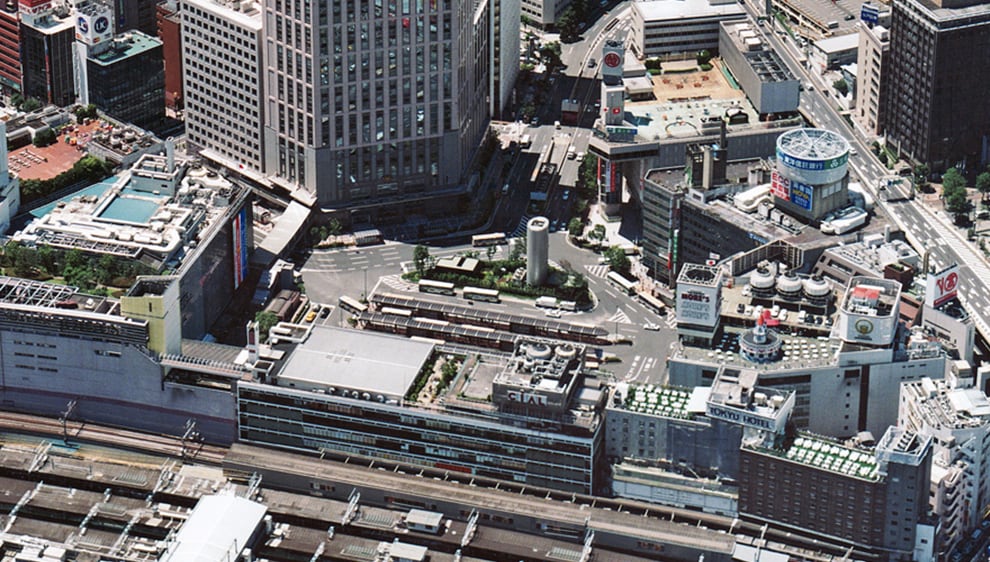
The new Yokohama Station west gate area.
The west gate area of Yokohama Station continues to change in major ways today. The Tokyu Line was expanded underground, and Yokohama Excel Hotel Tokyu and Yokohama CIAL, which had together formed a key train station building, closed for business, being replaced by a new building at the west gate of the station. The Sotetsu (Sagami Railway) had expanded further southward until that time, and now it began making inroads northward. One major aspect of the plan for the west gate station building was the idea to keep automobiles away from the district center, a radical departure from the approach of the 1990s. To that end, a large parking lot would be built in a former railroad lot on the north side of the station, but it had to be configured to allow crossing over the river. Therefore, a large pedestrian deck was installed, making use of aerial wiring from the Toyoko Line. This would create the necessary structure to take the flow of people from the station west gate and convey them northward. In Tsuruyacho, which was on the opposite bank and had been unable to capture the growing traffic of people in spite of its proximity to the station, this change led to increased redevelopment projects for mixed-use high rises that incorporated residential spaces, hotels, and commercial facilities within. This plan was referred to as the Yokohama Station Northwest Tsuruya District City Redevelopment Plan #1. MHS took part in a joint venture for the core design of this area. This project greatly contributed to transforming the pedestrian route of people on the west side of the station. The underground walkways from east to west would have had to temporarily be brought above ground in order to accommodate construction, but creative building strategies allowed for maintaining a smooth conveyance of people without disturbing the flow. MHS was responsible for the entire reconstruction and retrofitting of the west gate plaza area, including the entrance to the underground concourse.
The west gate of Yokohama Station is a place near and dear to MHS, given how long we have been involved with it. It has been over sixty years since the empty lots here were built into the Yokohama Meihingai, which transformed the shape of the city. We have acted as noble stewards of the city, supporting its growth through each project. From the unseen infrastructure that supports the city to the human elements and intangibles in proper use and reuse of the land, this is a vital home ground for us.
